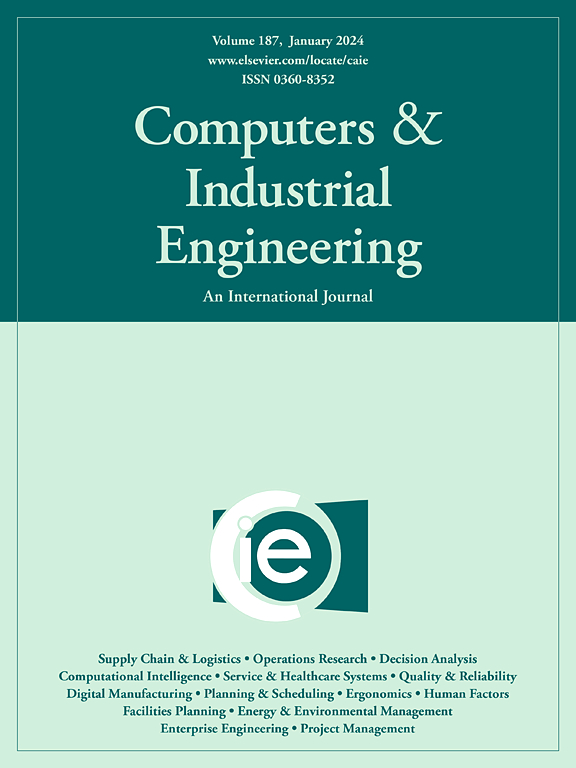Remaining useful life prediction considering correlated multi-parameter nonlinear degradation and small sample conditions
IF 6.5
1区 工程技术
Q1 COMPUTER SCIENCE, INTERDISCIPLINARY APPLICATIONS
引用次数: 0
Abstract
This study establishes a RUL prediction method based on an improved Wasserstein GAN, a nonlinear Wiener process, and a Copula function (IWNC) to address correlated multi-parameter nonlinear degradation with small samples. Initially, the proposed IWNC method develops a correlation-aware multi-sequence degradation data augmentation model using an improved Wasserstein Generative Adversarial Network (WGAN) that combines an LSTM-based generator and a 1D CNN-based discriminator. Time series consistency and multi-parameter correlation terms are incorporated into the generator’s loss function to enhance the quality of the augmented degradation data. A nonlinear Wiener process model, integrated with a Copula-based correlation model, is then developed to construct a joint RUL prediction model. Experimental results demonstrated that the IWNC method effectively addresses the challenges of small sample sizes and correlated multi-parameter nonlinear degradation. The augmented data generated by the IWNC method significantly contributes to improving RUL prediction accuracy. Due to the IWNC method’s ease of implementation and broad applicability, it holds considerable potential for widespread adoption across various domains, including digital twins.
考虑相关多参数非线性退化和小样本条件的剩余使用寿命预测
本文建立了一种基于改进Wasserstein GAN、非线性Wiener过程和Copula函数(IWNC)的RUL预测方法,以解决小样本下相关多参数非线性退化问题。首先,提出的IWNC方法使用改进的Wasserstein生成对抗网络(WGAN)开发了一个相关感知的多序列退化数据增强模型,该模型结合了基于lstm的生成器和基于1D cnn的鉴别器。在生成器损失函数中加入时间序列一致性和多参数相关项,以提高增强退化数据的质量。然后,将非线性维纳过程模型与基于copula的相关模型相结合,构建了联合RUL预测模型。实验结果表明,IWNC方法有效地解决了小样本和相关多参数非线性退化的挑战。IWNC方法生成的增强数据对提高RUL预测精度有显著贡献。由于IWNC方法易于实现和广泛的适用性,它在包括数字孪生在内的各个领域具有广泛采用的巨大潜力。
本文章由计算机程序翻译,如有差异,请以英文原文为准。
求助全文
约1分钟内获得全文
求助全文
来源期刊

Computers & Industrial Engineering
工程技术-工程:工业
CiteScore
12.70
自引率
12.70%
发文量
794
审稿时长
10.6 months
期刊介绍:
Computers & Industrial Engineering (CAIE) is dedicated to researchers, educators, and practitioners in industrial engineering and related fields. Pioneering the integration of computers in research, education, and practice, industrial engineering has evolved to make computers and electronic communication integral to its domain. CAIE publishes original contributions focusing on the development of novel computerized methodologies to address industrial engineering problems. It also highlights the applications of these methodologies to issues within the broader industrial engineering and associated communities. The journal actively encourages submissions that push the boundaries of fundamental theories and concepts in industrial engineering techniques.
 求助内容:
求助内容: 应助结果提醒方式:
应助结果提醒方式:


